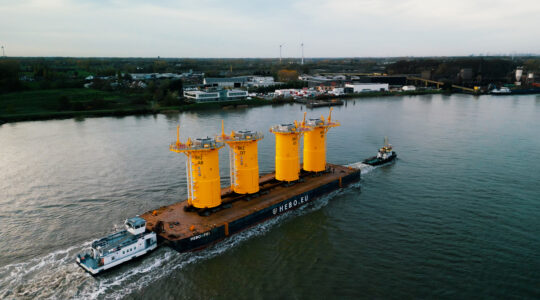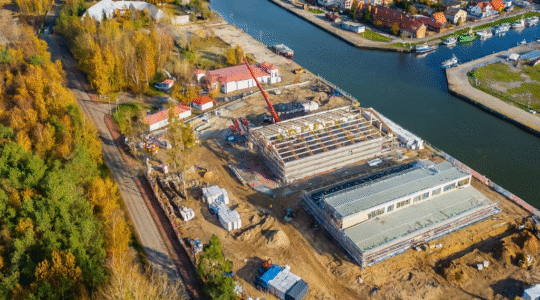
Equinor and Polenergia have selected Hitachi Energy to deliver electrical systems infrastructure for the MFW Bałtyk II and MFW Bałtyk III
MFW Bałtyk II and MFW Bałtyk III, located in the Baltic Sea approximately 27 km and 40 km from the port of Łeba, are two of the largest and most advanced offshore wind farms being developed in Poland.
Once operational, the wind farms will have a total installed capacity of 1440 MW, enough to power more than 2 million Polish homes.
Under the awarded contract, Hitachi Energy will be responsible for the Electrical System Design for the whole wind farm, from the wind turbines to the point of connection into the grid at Słupsk-Wierzbięcino substation, Poland. The projects are pending final investment decision, planned for 2024.
‘HEART’ of the system for transmission and transformation of energy
– We are ordering the ‘heart’ of the system for transmission and transformation of energy from offshore wind farms. This is one of the most important contracts of our Bałtyk projects. We are entering into a partnership with one of the world's leading energy companies, whose HVAC technology is crucial to the efficient transmission of energy from sea to land. We are building a strong global team around the MFW Bałtyk II and MFW Bałtyk III that will enhance their competitiveness and support a sustainable energy future for all of us. We look forward to joint initiatives to support the achievement of our ambitious local content goals – states Michał Michalski, Ph.D., president of the Management Board of Polenergia.
The contract covers system study analysis and the integration of all relevant equipment of interfacing contractors, so that the overall wind farms are designed with a safe, cost optimal and stable transmission system that is compliant with the Polish Grid Code requirements.
In addition, Hitachi Energy is also responsible for delivery of the overall power control system, overall telecom network, all high voltage equipment at the offshore substation and the onshore substation, as well as turnkey delivery of the whole onshore substation. The contract also covers interface work at the grid connection in Slupsk.
– This is another key milestone for these offshore wind projects, which will supply domestically produced renewable energy to the Polish power grid. We look forward to working with Hitachi Energy in Poland and their local subcontractors on bringing this competitive source of renewable energy to Poland – says Michał Kołodziejczyk, country manager of Equinor in Poland.
Strategic cooperation with Hitachi Energy
Hitachi Energy has been present in Poland for 97 years, and have approximately 2.500 employees in Poland, with offices, technology, research and engineering centers in Warsaw, Krakow, Wrocław, Lublin, Katowice, Poznań and Gdańsk, as well as factories in Łódź and Przasnysz. The contract targets between 25% and 35% of the contract value to be invested locally. This is based on the total contract value, including equipment procurement from 3rd parties.
– Earlier this year Equinor signed a strategic collaboration agreement with Hitachi Energy to work more closely together on future projects. This contract is the first since then, and we are very pleased to move into execution of our collaboration. We look forward to developing a local supply chain for electrical infrastructure to offshore wind farms along with Hitachi Energy in Poland – says Mette H. Ottøy, chief procurement officer in Equinor.
The combined capacity of both projects (1440 MW) represents a substantial part of the first phase of Polish offshore wind industry development scheme with a total capacity of 5900 MW. MFW Bałtyk II and III were awarded Contracts for Difference (CfDs) in May 2021 by Poland’s Energy Regulatory Office (ERO). The final investment decision for both projects is subject to obtaining the necessary permits and is planned for 2024 with the first power delivered to the grid in 2027.
Podobne wpisy

Educational Workbook “Bałtyk. The Sea of Green Energy” – Discover the Power of Wind with the Bałtyk Projects!

First Transition Pieces on Their Way – Advancing the Bałtyk 2 and 3 Projects

